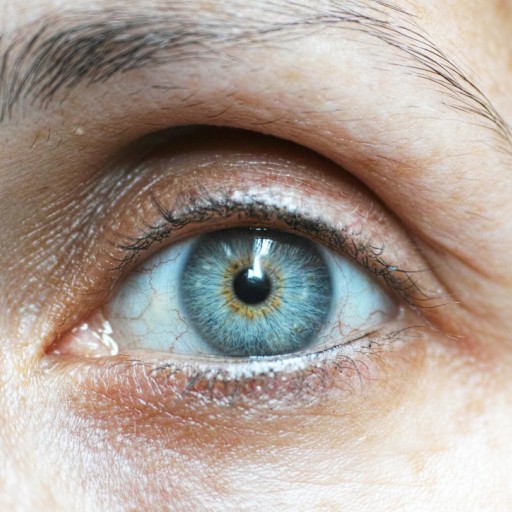Ocular Oncology (Eye Tumor)
1 results found-

Radioplaque Treatment Insertion and Removal (One Eye)
Dünyagöz Hastaneler Grubu Antalya Kepez, Antalya, Turkiye
Ocular Oncology (Eye Tumor)
Ocular oncology is a subspecialty of medicine that has come to the fore in diagnosis and management of ocular tumors. It is very important to conserve the vision and improve the quality of life of the patient with eye tumors. Eye tumors can be benign or malignant; each requires an approach in order for effective management of the tumor to take place. Early detection and treatment are imperative to improve survival rates and quality of life.
The symptoms of tumors in the eyes are so varied, and their detection requires awareness about the condition plus timely medical intervention.
What is Ocular Oncology?
Ocular oncology is a subspecialty of ophthalmology concerned with diagnosis, treatment, and management of tumors within the eye. These range from benign to malignant tumors that affect the retina, iris, or optic nerve. Ocular oncologists are specially trained for difficult cases of cancers of the eye so that optimum care could be provided for all patients with whatever condition they may have.
Symptoms of Eye Tumors
Signs and symptoms of eye tumors depend on the type of tumor and location. A cloudy vision, pain to the eyes, redness of the eyes, or a change in the appearance of the eye may all be indicative of an eye tumor. Some individuals start to suddenly lose their vision or see flashing lights. In children, this may mean a white spot seen in the eye or unusual movements of the eyes. Recognizing these symptoms early and seeking medical attention can result in a much better prognosis.
Types of Eye Tumors
There are several types of eye tumors, and their origin is primarily based on their nature and behavior; some of the common types are as under:
Retinoblastoma: A malignant tumor in children, usually affecting the retina.
Melanoma: Cancer of the uvea-the middle layer of the eye.
Choroidal Melanoma: Malignant tumor of the choroid, which is the layer of blood vessels between the retina and sclera. The most common ocular melanomas develop in the uvea, the middle layer of the eye wall.
Ciliary Body Tumors: These are tumors that originate from the ciliary body, a structure responsible for aqueous humor production.
The type of tumor is very important to understand and sometimes may be the difference in treatment strategy.
Diagnosis of Eye Tumors
The diagnosis of an eye tumor involves both a clinical examination and advanced imaging techniques. Clinical eye exams would involve an ophthalmologist checking the retina and other structures with a dilated fundoscopic exam. Ultrasound, MRI, and CT scans are examples of studies that may be utilized to evaluate the extent of the tumor and any involvement of surrounding tissues. Occasionally, one might need a biopsy to confirm a diagnosis.
Treatment Options for Eye Tumors
Treatment options for tumors of the eye are, in principle, arrived at based on the type of tumor, size, location, and general health status. These commonly include:
Surgery: Surgical intervention removes the tumor or that portion of the eye.
Radiation Therapy: High-energy rays against cancerous cells are used, often for the kinds of tumors that cannot be operated upon.
Chemotherapy: The systemic use of drugs to kill cancerous cells. It is one of the most common forms of treatment in patients with retinoblastoma. Laser Therapy: For destroying small-sized tumors or abnormal blood vessels. Treatments may be adopted in a multidisciplinary approach, where necessary, to tailor the treatment plans for each patient.
After Care and Follow-Up
Such care is important for follow-up and management of recovery and any possible side effects. Follow-up visits with the ocular oncologist should be done regularly, as it monitors the progress of the patient with the purpose of making sure that the tumor does not return. Other treatments or therapies may be necessary for patients who are suffering from the after effects of the initial treatment. These support services can play a significant role in cushioning the quality of life in such patients: counseling and rehabilitation of vision.
Prognostic Factors and Outcomes
Prognosis for tumors of the eye will depend on many factors, including tumor type and stage, general health of the patient, and adequacy of treatment. The outlook is generally good, especially if the tumor is diagnosed early and treated as soon as possible. Prognostic factors include tumor size, tumor location, and response to initial treatment. Due to constant active research and increasing treatment options, prognosis tends to get better with time in patients harboring tumors of the eye.
Ocular oncology is the field that is concerned with the treatment of eye tumors ranging from benign to serious ones and can be threatening to life. More knowledge on the symptoms, types, and treatments should help patients and attendants be better prepared to handle the challenges posed by the eye tumor. Thus, early diagnosis and treatment plans fashioned for individual needs are what an effective treatment option depends on; by turn, it may make sure that the patients get such care and help necessary in maintaining vision and are favorable to their overall well-being.
